 The 1981 murder trial of Alwyn Peter made Australian legal history when his defence lawyer successfully argued that charges of murder and manslaughter were inappropriate for dispossessed, semi-tribal Aborigines.
The 1981 murder trial of Alwyn Peter made Australian legal history when his defence lawyer successfully argued that charges of murder and manslaughter were inappropriate for dispossessed, semi-tribal Aborigines.
In December 1979 at the Weipa Aboriginal Reserve on Queensland’s Cape York Peninsula, Alwyn Peter killed his girlfriend Deidre Gilbert. She was 19. He was 22. He stabbed her to death in a drunken rage.
Should this one incident have moved us? Wasn’t it, after all, “just another black death”…an unfortunate domestic killing triggered by alcohol and anger, so commonplace in the Aboriginal community that it might hardly raise an alarm?
It was indeed, just another death. But this one, for whatever quirk of historical circumstance, did raise the alarm and raised it loud. For a short, significant time, Deidre’s death focused attention on a much bigger tragedy that had been gathering momentum unheeded for years – not the fate of one Aborigine, but the slow, systematic annihilation of a people by its own hand.
Aboriginal Australia was, and still is, killing itself…and no one seems to care. Award winning filmmaker David Bradbury took up Alwyn and Deidre’s story to find the cause of this genocidal trend.
State of Shock is his attempt to look at Black Australia without prejudice to white or black. The picture which emerges is neither pretty or romantic nor has it been shown before.
Bradbury and his team use scenes from the stage play State of Shock starring Ernie Dingo and Lynette Narkle juxtaposed with Alwyn’s life. The film takes an intimate look at. Alwyn and his family, showing how their broken culture and the destruction of traditions has left Aboriginal people lost and powerless, turning their anger inwards on themselves.
It was not always like this. Mapoon was the site of the first north Queensland mission, founded in 1891. Here Alwyn’s elders as children were taken from their mothers and brought up “the Christian way.” Tribal language was forbidden. Tribal law and custom was deemed satanic…and a lifestyle of 40,000 years was discarded. But in spite of all this, Mapoon still proved to be a paradise. It offered land for hunting and fishing and some restoration of tribal heritage, so vital to the Aboriginal identity.
Paradise was lost in 1957, the year the Queensland Government passed the Comalco Bill…the year Alwyn Peter was born. The Mapoon people were stripped of their last pretence of any control over their lives and land which was handed to the mining companies.
In 1963 the church abandoned the Aborigines to make way for proposed mining. Most left the mission but a small band stayed…only to see their homes burnt to the ground under orders of the Department of Native Affairs. The Mapoon people were sent to settlements throughout north Queensland, among them the desolate mining town of Weipa run by Comalco.
The Aborigines, including Alwyn’s family, depended on the mining company for whatever work was handed out to them, for their houses, for their existence. But there was no fishing or hunting to be done here. Different tribes were forced to live together on a small reserve.
Life degenerated into alcoholic despair; self-mutilation, suicide and attacks on loved ones has created a murder rate at Weipa higher than that of New York City or Chicago.
|
Prices (includes GST) Domestic: A$35 Postage in Australia: $5 for 1 DVD then an extra $3 for each additional DVD |
|||||||||||||||||||||||||||||||||||||||||||||||
| Name: | |||||||||||||||||||||||||||||||||||||||||||||||
| Address: | |||||||||||||||||||||||||||||||||||||||||||||||
| City: | |||||||||||||||||||||||||||||||||||||||||||||||
| State / Postcode: | |||||||||||||||||||||||||||||||||||||||||||||||
| Phone: | |||||||||||||||||||||||||||||||||||||||||||||||
| Email: | |||||||||||||||||||||||||||||||||||||||||||||||
|
|
|||||||||||||||||||||||||||||||||||||||||||||||
| Which DVD(s) are you interested in? | |||||||||||||||||||||||||||||||||||||||||||||||
|
|||||||||||||||||||||||||||||||||||||||||||||||
|
|
|||||||||||||||||||||||||||||||||||||||||||||||
| Are you a: | Domestic A$35 School: A$100 University/TAFE: A$340 State Libraries: A$650 |
||||||||||||||||||||||||||||||||||||||||||||||
| Payment Details: | Cheque Money Order |
||||||||||||||||||||||||||||||||||||||||||||||
|
Please make cheques / money orders out to: Frontline Films Pty Ltd And mail to: Frontline Films |
|||||||||||||||||||||||||||||||||||||||||||||||
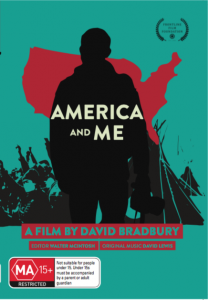
A filmmaker’s critique of the American penchant for Empire.
Australian filmmaker David Bradbury has been coming and going to the United States for the last forty years. A one-man band political activist who always travels with his camera, the twice Academy Award nominated Bradbury was easily able to slip into gear and start filming in eight US cities in the three month lead up to the shock election of Donald Trump, 2016. Bradbury was filming the native American Indian protest at Standing Rock when America woke to the news.
America once was Great. Due largely to the hard work, innovation of its people…and exploiting the resources and labour of others for its greater gain. America and Me chronicles how the hawks have come home to roost in the nest of America itself, 40 years after Ronald Reagan championed the economic theories of Milton Friedman and his infamous Chicago Boys.
America and Me interviews veterans of America’s failed wars to maintain Empire, gets down in the gutter with the homeless to find out what life is like on the streets, speaks to a nun who was violated by the military junta in Guatemala under the directions of a CIA operative, goes to the US/ Mexican border where Trump plans to build the Wall, exposes the deadly connection between CIA HQ Langley, Virginia to CIA spy base Pine Gap in Australia, responsible for the death of hundreds of children and adults from drone attacks….and ends up at Standing Rock where private security guards turned dogs onto non violent protestors and sprayed mace at point blank range.
Bradbury uses telling moments from his earlier films shot on the edge of the American Colossus – Nicaragua No Pasaran, Chile Hasta Cuando? (Pinochet’s dictatorship), Frontline (about the Vietnam war) and South of the Border (the New Song movement and radical politics versus dictatorship in Central America), to give context to his critique of the American penchant for Empire.
Editor Walter Mcintosh
Original Music David Lewis
Directed And Produced Camera/ Sound David Bradbury
Producer Treena Lenthall
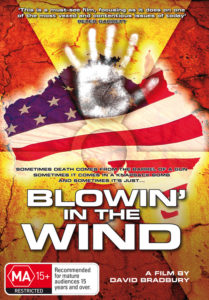 A deeply disturbing film about the use and effects of DU munitions in wars in Iraq & Afghanistan, and how this danger is now coming to our backyard.
A deeply disturbing film about the use and effects of DU munitions in wars in Iraq & Afghanistan, and how this danger is now coming to our backyard.
Blowin’ in the Wind examines the secret treaty that allows the US military to train and test its weaponry on Australian soil. It looks at the impact of recycled uranium weapons and the far-reaching physical and moral effects on every Australian. The film’s release has been timely as the government currently moves to approve more uranium mines while arguing the contrary – that by going nuclear we are being both ‘safe’ and ‘green’.
Blowin’ In The Wind reveals that Iraqi babies are now being born with major birth defects. Bradbury wonders whether Australians living downwind from the military testing ranges will be next. He argues that we were lied to by the British over the Woomera and Maralinga atomic tests. Can we trust another equally powerful partner in our ‘war on terror’? With a cash budget of just $12,000 Blowin’ In The Wind raises pertinent questions which cannot be ignored by the Australian public. The film shocked, angered and surprised large audiences when shown at the Sydney and Brisbane Film Festivals.
Director’s Statement (David Bradbury)
This is a film that very much wanted to find me. I tried to fend it off, exhausted from making environmental and political films on shoestring budgets that told hard truths to my fellow Australians that they needed to hear but preferred to ignore. In today’s climate of self censorship, and public broadcasters who fear that their political masters in Canberra will still further cut their budgets if they support these sorts of films, fellow filmmaker Peter Scott and I pushed on regardless. With a hard cash budget of $12,000 and a beg, borrow or make do philosophy…and a lot of favours, we’ve pulled together this doco I know you’ll never see on ‘your ABC’. The picture it paints and the consequences for us all if we don’t raise our protest loud and long to this new military alliance with the United States is too devastating to ignore.
The Paddy McGuinness’s, the Gerard Henderson’s and Greg Sheridan’s of this world with their sycophantic attitudes towards their media masters and ruling class elite will have a field day in attempting to put this film down, to write it off as ‘propaganda’, typical anti-American sentiment with no substance. It’s time for all of us to draw a line in the sand, to acknowledge whether we are in fact happy to be the 51st state of America.
More than ever, it’s time for us all to stand up and be counted for the decency and genuine moral values of what I believed as a kid it meant to be ‘a fair dinkum’ Australian. Not a false, jingoistic patriotism that is built on fear, that justifies war crimes in the name of the so-called War on Terror. Rather, I embrace a healthy nationalism that acknowledges who we are as Australians with compassion for the underdog and giving everyone a fair go. In a humble but sincere way, I hope this film made with a lot of heart and commitment can play a small but important role in galvanising a lot of us to do just that.
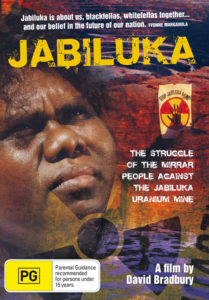 The struggle of the Mirrar people against the Jabiluka Uranium mine.
The struggle of the Mirrar people against the Jabiluka Uranium mine.
“Jabiluka is about us, blackfellas, whitefellas together…and our belief in the future of our nation.”
In 1997, Energy Resources of Australia (ERA) pushed to open a new uranium mine surrounded by the World Heritage listed Kakadu National Park.
The traditional Aboriginal owners told the company and the government that they did not want this mine. They were concerned about its effects on their country and culture. Environment groups and many others also worked to stop Jabiluka and other new uranium mines.
Many Australians asked how could we threaten the cultural and environmental values of our most famous world heritage listed national park – Kakadu. How could we put at risk the culture and the lives of the indigenous people of Kakadu with a new uranium mine at Jabiluka?
The Federal Government of Australia, the government of the Northern Territory, mining company Energy Resources of Australia (ERA) and the Northern Land Council all wanted uranium mining to go ahead at Jabiluka but the Mirrar people say ‘No’.
Since the Ranger mine at Jabiru was given approval in 1978 Mirrar opposition to the proposed Jabiluka mine strengthened…19 years on. Living and social conditions amongst Kakadu’s indigenous population had worsened and the people were deeply concerned about the impact of mining on their lives and the unknown consequences of storing crushed and pulverised radioactive wastes on their land.
In the culture of the Mirrar, Jabiluka is so sacred not even traditional owner Yvonne Margarula could speak about it. And yet knowing this the then Federal Environment Minister Robert Hill gave the green light to the Jabiluka mine despite the negative findings of a social impact study and warnings from his own departmental bureaucrats that the mining company’s environmental impact statement was deficient in key areas.
Jabiluka was the first of 26 proposed new uranium mines the Howard Government had before it for approval. In this important film twice Academy Award nominated director David Bradbury captures the controversy over Jabiluka.
The Jabiluka mine was proposed to be underground, below the flood plain in an area infamous for its big wet season and beside Kakadu’s famous wetland. ERA planned to clear a mine site and bulldoze a road 22.5 kilometres long to truck the ore to the Ranger mine where it would be processed into yellowcake and then exported.
ERA’s Philip Shirvington (CEO saw management of the mine as a simple matter of a job they do well: ‘We don’t add any radioactivity to what’s already there naturally,’ he said. But ‘not so’ said the traditional owners, scientists and environmentalists who were concerned that the tailings would remain radioactive for the next 250,000 years.
The film Jabiluka clearly shows how the Mirrar were given no choice over the Ranger mine, how they were caught in a misleading process to consent to a lease over Jabiluka and how they resisted those same pressures to allow mining to proceed.
The story of Jabiluka is also significant because it raises questions about the real value of ‘Land Rights’. The Mirrar people now own their land but are wondering whether that actually means anything. On December 16 as part of her steadfast campaign Yvonne Margarula took her case to the Federal Court of Australia to prevent the Federal Government granting ERA approval to export uranium from Jabiluka.
She continued the fight first taken up by her father Toby Gangale… for the right of her people to live in harmony with 40,000 years of cultural tradition. “We know we own the country” she says. “We know. We born the country, and we live the country. It is our country… black country… not white country.”
In 1978 Professor Manning Clark visited the ‘Top End’ and was left with an enduring impression of its abundant cultural treasures, of its pristine wetlands and majestic escarpments. Following that visit he stated clearly his opposition to mining Kakadu.
“It would be an evil day in the history of this country if the white man once again showed the black man that nothing else mattered except material grandeur.
Is it too much to hope that the natural paradise of Kakadu National Park might be a setting not so much for a human paradise but at least a place where the white man and the black man can at last live in harmony with each other?”
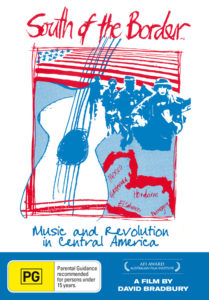 David Bradbury’s documentary examines how the political and economic struggle in Central America is expressed through the music of the people south of the border, from Mexico to Managua.
David Bradbury’s documentary examines how the political and economic struggle in Central America is expressed through the music of the people south of the border, from Mexico to Managua.
The United States has always liked to call the shots South of the Border. In Central America where the press is censored, the radio and TV gagged, the US-backed regimes have failed to stop the music. You can be gaoled, even killed for singing the wrong song – the song of protest – but still the music goes on.
Australian film maker David Bradbury and his crew covered five countries in five months – from Mexico to Managua – in search of the music. The result is this passionate film, South of the Border. Music is the star of this film. The music comes from the people and it has a relevance to their daily lives which is often lacking in the music that tops the hit parade.
Narrated by Peter Garrett and superbly photographed by cinematographer Philip Bull, South of the Border was filmed wherever the music lead. It captures and sets to music the excitement of 200,000 chanting students cast into “the classrooms of the streets” in the largest demonstrations seen in Mexico since 1968.
In El Salvador, the film makers went aloft in US-supplied helicopters … then slipped around army patrols to film musicians and combatants in the leftist guerilla zones.
On Guatemala’s Carribean coast, the Watusis, a group of seven kids, descendants of African slaves, rap out a rhythm on their makeshift instruments – jam tins, plastic bottles and tortoise shells.
In Honduras, local musicians protest the military occupation of their country as huge helicopters and transport plans spill out United States marines. They storm their beaches in a dress rehearsal of an invasion that might take place one day in Nicaragua.
On the border itself, Sandinista folksinger Norma Helena Gadea and Mario Rojas sing for Nicaraguan troops huddled in their trenches guarding the mountainous north from invading contras. Their resolution to stay the distance is echoed by brilliant reggae singer Remigio Hodgson “Reagan is for the Reagans, Nicaragua is for the Nicaraguans, And if you come in that plane, you too will be shot down my brother, Sorry to tell you…”
South of the Border is a chorus of courage that uses music to chronicle the struggle between repression and revolution. It is the story of those who would either hold history back or take it forward in the countries that make up the vital land link between North and South America.
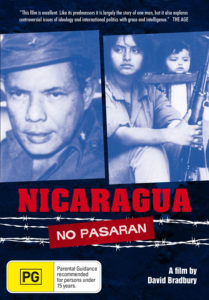 In 1979 the revolutionary Sandinista movement came to government after 43 years of organised resistance and the death of 50,000 Nicaraguans.
In 1979 the revolutionary Sandinista movement came to government after 43 years of organised resistance and the death of 50,000 Nicaraguans.
They inherited a country bankrupt and with a foreign debt of US$1.5 billion. Through the central figure of leading Sandinista Tomas Borge, David Bradbury examines the past, present and future of this small Central American nation whose methods of survival continue to challenge the US military machine and, through liberation theology, the Catholic Church.
Australian filmmaker, David Bradbury, spent six months in Nicaragua. What he experienced there, and captured on film, was the human face of a troubled revolution.
For years Nicaragua suffered under the brutal dictatorship of General Somoza. NICARAGUA: NO PASARAN describes this period of Nicaraguan history simply, and explains the extraordinary events which led to the formation and eventual coming to power of the revolutionary Sandinista movement.
Ronald Reagan, President of the USA, is constantly accusing the Sandinista government of activities that threaten to destabilise the whole of Central America. One by one, the film explores the truth or otherwise of these accusations.
Are the Sandinistas just puppets who dance to the tune of Moscow and Cuba? Why was the Pope shouted down by tens of thousands of angry Nicaraguans at his mass rally in Managua in 1983? Is this to be another Vietnam?
As with his previous films, Bradbury has concentrated on a central character to best illustrate the story of Nicaragua. It is Tomas Borge, Minister of the Interior in the nine-man National Directorate – the collective leadership that governs Nicaragua.
Borge is the only surviving founder of the original Sandinista movement. He lived the life of a political fugitive, always on the run, for 19 years. His wife was raped, tortured and murdered by Somoza’s National Guard. He himself was tortured and spent six years in gaol.
Now as Minister of the Interior, in charge of police and State security, he is at the centre of Nicaragua’s fight for survival against the US-backed contras who are attempting to overthrow the Sandinista government.
It is through Borge’s charismatic personality that the history and spirit of this most unusual revolution are given voice: NICARAGUA: NO PASARAN: – Nicaragua: they will not enter.

